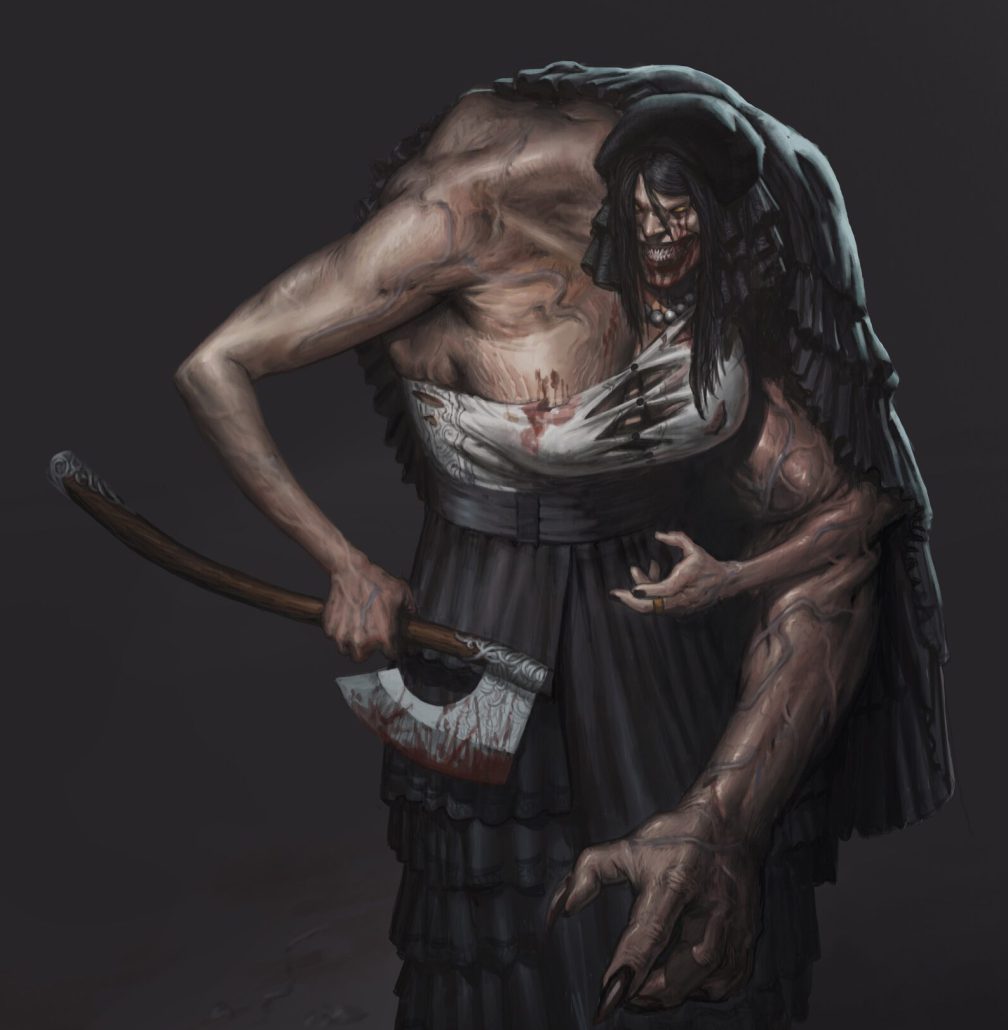2D Art Production
The art of 2D design is a miraculous process that transforms creative ideas into visually stunning designs. From crafting breathtaking keyframes for epic battles to bringing visually striking characters to life, 2D art plays a critical role in game-related or interactive projects. As a multifaceted field that encompasses various aspects of early-stage game development, 2D art production is an essential step in the design process. With the support of a talented team of concept artists at Polydin Studio, you can set the tone and mood of your story, bringing your vision to life in a visually compelling and immersive way.


Our 2d art services
At our studio, we’re passionate about providing a range of 2D art production services. We’ve got a fantastic team of talented artists, and we’re always on the lookout for new and exciting projects to tackle. Our ambition and creativity know no bounds, and we’re committed to delivering a truly unique artwork that exceeds your expectations.
2D CHARACTER DESIGN
We understand that characters are at the heart of any unforgettable story. When it comes to character creation, we believe that every detail matters. Our team carefully considers the backstory, personalities, superpowers, motivations, and story arcs of each character, ensuring that they are fully fleshed out with depth and dimension. At our concept art studio, we help ensure that your characters are engaging and relatable and leave a lasting impression on your audience. Our services here includes:
- Character design
- Creature design
- Mech design
- Outfit/props/skins
2D ENVIRONMENT
Environment is the stage where the story unfolds. It doesn’t matter where it is set, a gloomy village or a mysterious underwater world. What truly matters is the atmosphere and tone that our artists can bring to these settings. Our 2D art production in this area includes:
- Key frames
- Level art
- Vehicle design
- Weapon design
2D illustrations
We specialize in creating intricate illustrations for a variety of purposes. We understand that each project is unique, and we work closely with our clients to ensure that their specific requirements are met. Regardless of how you communicate your vision to us, our skilled artists will bring it to life in a way that meets or exceeds your expectations. Our illustration services include:
- Card illustration
- Table-top games illustrations
- Avatar and icon illustrations
OUR APPROACH AND BENEFITS
At our studio, we offer a comprehensive range of art services to meet all your needs. From high-quality 2D art production in various formats and styles to any kind of art outsourcing, Polydin is your ultimate choice. we are committed to come up with the best for our clients since our artists can adapt to any style and pipelines.
EXPERIENCED ARTISTS
Each of our artists has unique skills and strengths, and their experience combined can overcome any kind of project with different themes and styles.
PARTNERSHIP
We strive to keep our clients satisfied and eventually transform them into our long-term partners.
COMPETITIVE PRICES
We not only provide 2D art production services, but also offer competitive and affordable pricing that sets us apart from other studios.
TECHNICAL EXPERTISE










OUR WORKS
What Others Say About Us










FAQ
What is 2d art?
2D art, also known as two-dimensional art, refers to artworks created on a flat surface, such as a canvas, paper, or computer screen, that has only two dimensions: width and height. This means that the artwork does not have depth, and the illusion of depth is created through the use of perspective, shading, and other techniques.
Some examples of digital 2D art include digital paintings, illustrations, sketches, and graphic designs. The digital nature of this art form allows for greater flexibility and control, as artists can easily make changes, undo mistakes, and experiment with different techniques without having to worry about damaging the physical artwork.
2D art is becoming increasingly popular in the fields of animation, video game design, and graphic design, as it allows artists to create high-quality, complex visuals with greater speed and efficiency than traditional methods.
What are the stages of 2d art?
The stages of creating digital 2D art can vary depending on the artist's workflow and the specific project they are working on. The stages of digital 2D art production can be flexible, and artists may adjust their process to fit the needs of a specific project.
Conceptualization: This stage involves brainstorming and generating ideas for the artwork, as well as sketching out rough drafts or thumbnails.
Sketching: Once the artist has settled on an idea, they will create more detailed sketches or rough drafts using digital drawing software or a drawing tablet. This stage allows the artist to refine their composition and work out any design issues before moving on to the final artwork.
Line art: After the artist has finalized the composition and design of their artwork, they will create clean, crisp line art using digital drawing tools.
Coloring: This stage involves adding color and shading to the artwork using digital painting software. The artist may use a variety of techniques, such as gradients, layering, and blending, to create a realistic and visually appealing image.
Final touches: Once the coloring is complete, the artist will add any final touches, such as highlights, shadows, or special effects, to complete the artwork.
Exporting: Finally, the artist will export the finished artwork in a format suitable for its intended use, such as a JPEG, PNG, or TIFF file.
What is the difference between 2D art and drawing?
Drawing is a technique used to create 2D art. It involves using tools such as pencils, pens, or charcoal to make marks on a surface such as paper or canvas. Drawing can be used to create a wide range of images, from sketches to detailed illustrations, and can be done in a variety of styles.
2D art, on the other hand, refers to any artwork that is created on a flat surface, such as paper, canvas, or a computer screen. This includes not only drawings, but also paintings, prints, digital art, and other forms of visual art that do not have a physical depth.
In other words, drawing is a specific technique used within the broader category of 2D art. While drawing is a fundamental skill for many 2D artists, not all 2D art production is created through drawing.
What are the characteristics of 2D art?
Some of the key characteristics of 2D art include:
Flatness: 2D art is flat, meaning that it does not have any physical depth. It is created on a two-dimensional surface, such as paper, canvas, or a computer screen.
Composition: The composition of a 2D artwork is an important aspect of its overall design. Artists use various elements, such as color, line, shape, and texture, to create a visually appealing composition.
Perspective: Although 2D art is flat, artists can create the illusion of depth and space through the use of perspective techniques.
Color: Color is a crucial element in 2D art. Artists use color to create mood, convey meaning, and add visual interest to their work.
Line: Line is used in 2D art to define shapes and create texture. It can be used to create both realistic and abstract images.
Texture: Texture adds depth and dimension to a 2D artwork. Artists can create texture using a variety of techniques, such as crosshatching, stippling, and blending.
Style: There are many different styles of 2D art, each with its own unique characteristics. Some common styles include realism, impressionism, abstract, and pop art.
What is 2D vs 3D in art?
Digital 2D art refers to artwork that is created on a two-dimensional digital canvas using digital drawing and painting tools. This includes illustrations, graphic design, digital painting, and other forms of digital art that do not have physical depth.
Digital 3D art, on the other hand, refers to artwork that is created in three dimensions using digital modeling and rendering tools. This includes 3D animation, video game design, virtual reality experiences, and other forms of digital art that have physical depth.
The main difference between digital 2D and 3D art is that 2D art is flat and has no physical depth, while 3D art has physical depth and occupies space in a virtual environment. Additionally, digital 2D art is usually viewed from a single perspective, while digital 3D art can be viewed from multiple angles and perspectives.
Why choose a 2D game art outsourcing studio?
There are several reasons why one might choose to hire a 2D game art outsourcing studio for their game development project:
Specialization: 2D game art outsourcing studios specialize in creating high-quality 2D art assets for games. They have the expertise and experience needed to create visually appealing game assets that meet the specific needs and requirements of a game project.
Cost-effectiveness: Outsourcing game art can be more cost-effective than hiring an in-house team. Game art outsourcing studios can provide high-quality artwork at a lower cost because they have specialized equipment, software, and workflows that enable them to work efficiently.
Time-saving: Developing high-quality game art can be a time-consuming process. Outsourcing game art studios can help save time of 2D art production by allowing game developers to focus on other important aspects of game development, such as programming and game design.
Flexibility: 2D game art outsourcing studios offer flexible services that can be tailored to the specific needs of a game development project. They can provide a wide range of services, from concept art and character design to backgrounds and UI design.
Quality: A reputable 2D game art outsourcing studio will have a team of skilled and experienced artists who are dedicated to creating high-quality game assets. They will use the latest techniques and tools to create artwork that is visually appealing and meets the standards of the gaming industry.
What is the best 2D art program?
The "best" 2D art program can vary depending on individual preferences, specific needs, and the artist's level of expertise. However, there are several highly regarded and widely used 2D art programs in the industry. Here are some of the popular ones:
Adobe Photoshop: Adobe Photoshop is one of the most well-known and versatile software for digital art and image editing. It offers a comprehensive set of tools and features for creating and manipulating 2D artwork.
Procreate: Procreate is a powerful and intuitive digital painting app designed specifically for iPad. It is widely praised for its natural brush engine, extensive brush library, and user-friendly interface.
Clip Studio Paint: Clip Studio Paint, formerly known as Manga Studio, is a feature-rich software popular among illustrators, comic artists, and animators. It provides a wide range of tools and features tailored for creating 2D art and comics.
Corel Painter: Corel Painter is known for its natural media brushes and emulation of traditional art materials. It offers a vast array of brushes and tools to simulate various traditional art styles.
Krita: Krita is a free and open-source digital painting software that has gained popularity for its powerful brush engine, customizable interface, and extensive set of features.
GIMP: GIMP (GNU Image Manipulation Program) is a free and open-source raster graphics editor. While not specifically designed for digital painting, it offers a comprehensive set of tools for editing and creating 2D artwork.
It's important to note that the "best" program for you ultimately depends on your specific requirements, workflow preferences, and personal artistic style. It's recommended to try out different programs and see which one suits your needs and artistic vision the most.
Why 2D is more popular than 3D?
While both 2D and 3D art have their own merits, 2D art has traditionally been more popular in certain areas due to a few key reasons. 2D art can have a unique visual charm and artistic quality that resonates with many people. Styles such as traditional hand-drawn animation, comic books, and illustrations have a long-standing cultural and artistic significance that continues to capture people's imaginations.
2D art can be more accessible in terms of creation and consumption. It often requires fewer resources, equipment, and technical knowledge compared to 3D art, making it more approachable for aspiring artists and enthusiasts. Many 2D art production programs and tools are widely available, and the learning curve can be less steep compared to 3D software.
Also, 2D art allows for a wide range of artistic styles and techniques. Artists can freely explore various drawing, painting, and illustration styles without being limited by the constraints of 3D modeling and rendering. This flexibility in expressing artistic vision and storytelling has contributed to the enduring popularity of 2D art.
Industries such as animation, comic books, graphic novels, and illustration have a long history and established markets for 2D art. These industries have a dedicated audience and fan base that appreciates the unique qualities of 2D artwork. As a result, there is a continued demand for 2D art in these fields.
However, it's important to note that 3D art has also gained significant popularity and has become an integral part of various industries, including video games, film, advertising, and architectural visualization. The advancements in technology and the immersive capabilities of 3D art have opened up new possibilities and expanded the creative landscape. The preference for 2D or 3D art ultimately depends on the specific context, artistic goals, and audience preferences.
Let's discuss your idea
We’d love to chat with you about your project and provide you with a quote. Simply fill out the form below and we’ll get back to you as soon as possible.

